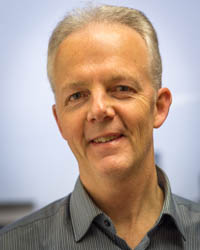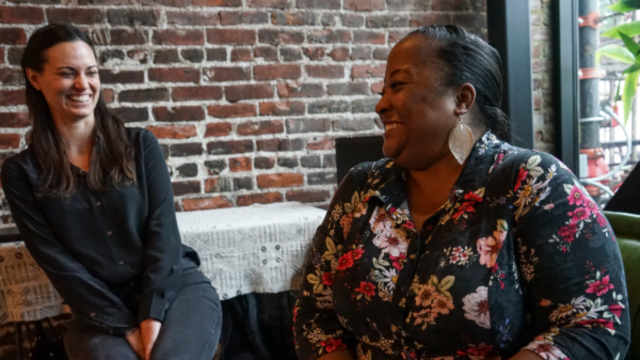 Jeff Clarke, CEO
Jeff Clarke, CEO
Happy New Year! A year ago, Carol Lewis and I identified philanthropic themes we thought would define our region in 2014. In revisiting those themes, thinking about the many conversations I had last year and looking to the year ahead, they continue to resonate strongly. Late last year, we surveyed our learning network to understand what 2015 would bring. You told us:
Opportunities: advocacy, collaboration and equity
- Advocacy to raise awareness and influence change
- Addressing issues of equity and inclusion
- Collaborative work in communities with other philanthropists
- Engaging the next generation of philanthropists
Challenges: remarkably similar
- Barriers to collaboration including leadership, capacity and community engagement
- Partisan politics
- Income inequality (and displacement as the flipside to a strengthening economy)
- The retreat of government from funding core social needs
- Keeping family and/or board members engaged and adaptive
Here is what I’m seeing and hearing for 2015:
The economic recovery means more philanthropic resources for impact
The U.S. economy grew at its fastest pace in over a decade in the third quarter of 2014, reaching an annualized rate of 5%, and creating more jobs than any year since 1999. To the extent that philanthropy is no different from anyone else in deriving energy and optimism from the economic environment, the good news is that 2014 was another strong year. Wall Street again closed at record highs, riding a 12% gain in the S&P 500.
A growing economy translates directly into more dollars for philanthropy. Giving USA Foundation found that U.S. charitable giving increased 4.4% (foundation giving, as a component, was up 5.7%) to $335.2 billion in 2013, the fourth consecutive year of increased giving. While still below the 2007 pre-recession high-water mark, giving has increased by more than 12% since recession's end in 2009. The Chronicle of Philanthropy tells a similar story with 2013 endowment median returns of 12.4%. It is important to highlight crowdfunding as a growing source of community capital. With 100% year over year growth to $10 billion in 2014, it is expected to grow to $100 billion dollars by 2025, increasingly focused on small business and nonprofit financing.
What are the potential economic headwinds in 2015? Despite indications of growth from Main Street, many suggest that the S&P could climb a very modest 2-4%. Unless you believe the U.S. to be decoupled from the global economy, there is certainly plenty of volatility, including currency fluctuations, natural resources, terrorism, economic inequality and geopolitics. Last week, the International Monetary Fund lowered global growth forecasts for both 2015 and 2016, citing weaknesses in most of the world’s major economies.
Northwest philanthropic leaders are optimistic about 2015
- 85% of the foundation leaders we surveyed said that they're planning to increase grantmaking by a median amount of 10%.
- 40% of foundation leaders expect to grow their staff teams to handle increased grantmaking activity.
- Foundations with investable assets are also decidedly optimistic about their financial prospects, expecting a median investment return of 7%.
Collaboration is essential
Collective networks such as Social Justice Fund, Social Venture Partners and Washington Women’s Foundation continue to experience strong donor demand to learn together and pool their philanthropic dollars for impact. That said, network participants expect to be engaged deeply over time and how best to do that understandably keeps the leaders of these organizations up at night. It’s about relevance. To paraphrase Paul Shoemaker, SVP’s chief connector: “That is pretty much all we think about.”
At the same time, The Giving Practice, Philanthropy Northwest’s consulting practice, continues to steward a range of compelling funder collaborations across the region. There is growing demand to accelerate genuine funder-nonprofit dialogue. Finally, the experiences of our partners at Community Democracy Workshop and our own learning team tell us there is strong and growing interest in the long-term work of engaging with communities.
Philanthropy is making bigger bets for impact in a complex, dynamic world
The Northwest counts creative grantmaking among its greatest assets. However, as we adapt to rapid change wherever we live, Clara Miller, CEO of F.B. Heron Foundation, in reflecting on a changing world, challenges the traditional endowment model and the grantmaking as the primary financial tool for impact:
“The urgency and size of the (structural economic and social) problems we face require that we work differently….. The way we deploy capital and the assumptions and approaches we use to do so can in themselves make a difference. We plan to invest 100 percent of our endowment — as well as other forms of capital — for mission. Beyond money, we are obligated to deploy all of the resources at our disposal — capital, revenue, ideas, talents, influence, and natural allies — toward the broad, multi-sector approach, which will be necessary for the pursuit of goals that are, admittedly, much bigger than those we have pursued in the past.”
Our partner Mission Investors Exchange continues to thrive. Their national network continues to grow quickly. They sold out their biennial conference in Minneapolis and have logged almost $1 billion worth of mission investments in their online database. While a cross sector coalition led by philanthropy successfully navigated Detroit’s "Grand Bargain" to resolution in 2014, here in the Pacific Northwest, our sector leadership manifested itself in many important mission investing and advocacy initiatives as illustrated in our 2014: A Network in Action retrospective.
If I am to invoke the theme of “a changing world,” it is important to understand that the Northwest is also a community of global citizens and a leader in global philanthropy. In their 2015 Annual Letter, Bill and Melinda Gates made a big bet that the lives of people in poor countries will improve faster in the next 15 years than at any other time in history and predicted that they will also improve more than anyone else’s during that time. Many in our community are working together to ensure that future comes to fruition.
Advocacy and mission investing are mainstream elements of Northwest philanthropy in 2015
- Nearly 40% of foundations we surveyed expect to engage in direct policy advocacy with policy-makers and 33% expect to fund their grantees to engage in advocacy work.
- 18% of foundation leaders expect to make below market-rate program-related mission investments and 11% expect to make market-rate mission investments.
Despite this promising economic recovery, philanthropic commitment and creativity:
The economic recovery has been a tale of two cities
Its benefits have not been evenly distributed and large portions of society are still in profound distress.
- Global wealth concentration and therefore extreme economic inequality continue to accelerate. Based on Credit Suisse and Forbes data, Oxfam International concluded last week that the world’s 80 richest people now possess more wealth than the poorest half (3.5 billion) of the world’s population. Today the richest 20% possess 94.5% of the world’s wealth. By 2016, Oxfam predicts that the world’s richest 1% will own more than half of the world’s wealth.
- According to the U.S. Census Bureau, the incomes of those in the top 5% of the income range are nine times the incomes of those in the bottom 20%. More than 47 million Americans—over 15% of the U.S. population—live in poverty. Here in our region, we saw incremental progress last year as all six states are now at or below the national rate. Women, children, persons of color and seniors continue to experience disproportionate hardship.
Against this backdrop, the final theme resonates even more strongly:
Philanthropy and civic leadership have never been more important
Philanthropy in the Pacific Northwest reflects the wonderful legacy of optimism, entrepreneurial risk taking and civic leadership that has defined our region from its earliest days. However, our institutions of democracy and civil society are under immense pressure. In his monograph Philanthropy and The Renewal of Democracy; Is It Time to Step up Our Game, our own Daniel Kemmis optimistically positioned philanthropy for impact:
“Now, as the larger society faces unprecedented challenges to its ability to solve its most pressing problems, the renewal of democratic practices and the reform of democratic institutions has become a pressing need in its own terms. Philanthropy now has the opportunity to become more conscious of its democratic role and to make a timely and crucial contribution to restoring the health of our democracy.”
In short, while the Philanthropy Northwest network engages across a range of scale, strategies and tactics, Northwest philanthropy continues to be powered by its optimism, creativity and entrepreneurial risk-taking as it experiments and hones its skills to adapt to this volatile, complex, uncertain and ambiguous world. We do this not only because we must. Quite simply, we do this because it’s who we are. Given that, I’m confident that our collective bets in 2015 will continue to build upon the region’s legacy of innovative philanthropic and community leadership.


